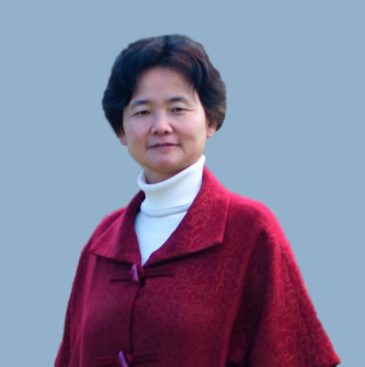Programming the smallest particles to harness the power of quantum computing
Professor Jingbo Wang has spent her entire career solving the Schrödinger equation, trying to accurately describe the state of quantum-mechanical systems. She now simulates the smallest possible systems – single atoms, electrons and photons – in order to demonstrate the power of quantum computing.
About Professor Jingbo Wang
Jingbo grew up in a small Chinese city during the now-infamous Cultural Revolution, when over one billion people suffered extreme poverty and millions of children were without proper education. She was extremely fortunate to be given the opportunity to study physics at Sichuan University. She subsequently won a scholarship to complete a PhD in quantum physics at the University of Adelaide, and has been working in that field ever since.
Jingbo’s research ambitions have seemingly scaled ‘downwards’ over time. Frustrated at the approximations needed to model the behaviour of condensed matter systems, she moved to much simpler systems that could be more precisely studied and controlled. From electron transport in crystalline material to diatomic molecular spectroscopy, to electron–atom scattering, and eventually to precision control of single atoms, electrons and photons, Professor Wang’s research now has direct applications in quantum information and quantum computing.
Research with supercomputers
Jingbo uses the Pawsey Supercomputing facilities to simulate the behaviour of prototype quantum computers. Where classical computers encode each bit of information as either a ‘0’ or a ‘1’, quantum computers hold information as qubits, which can encode both ‘0’ and ‘1’ at the same time.
“Three qubits can encode the first eight numbers, from zero to seven”, Jingbo explains. “Adding a fourth qubit doubles its capacity to sixteen numbers. Each time you add just one qubit, you double the computing capacity of the system. That’s why quantum computing has the potential to be so incredibly powerful. If you wanted to double Pawsey’s computing capacity, you’d need to build a second Pawsey. But to double the capacity of a quantum computer, you only have to add one extra qubit.”
The difficulty lies in that each qubit is a single atom, electron, or photon. Building the hardware systems that allow the control and manipulation of individual qubits is extremely challenging, and is still at the very cutting edge of research in only a few laboratories in the world. A different sort of computer logic is also required to manipulate the astronomically large number of calculations performed with multiple qubits. A set of quantum gate operations (not, Hadamard, phase and control-not) will replace the classical (not, or, and) logic gates, which operate in quantum parallel on a coherent linear superposition of states.
Successfully demonstrating the operation and power of quantum computing logic is very difficult when first-generation quantum computers do not yet exist. Jingbo points out: “The first quantum computers are going to be incredibly expensive and require extreme conditions to operate. To get there, we need to demonstrate that they can actually do something useful and provide the results we’re after. So we’re simulating these quantum logic computations for a few qubits using Pawsey, and demonstrating that they can be extrapolated and scaled up.”
Real world solutions
Running quantum computation simulations on a classical supercomputer, Jingbo’s team have been able to develop efficient quantum algorithms for machine learning, and to solve combinatorial optimisation problems such as working out the most efficient way to schedule jobs for multiple processors, or maximise the number of irregular objects that can be packed into a container.
They have also demonstrated how to extract local and global structures from complex networks, and decide which nodes are the most important – the equivalent of calculating Google rankings for every webpage on the internet. Another practical problem is that networks with similar topological structures can actually look quite different, and demonstrating the structural similarity is extremely difficult. Professor Wang’s team have developed a quantum-inspired algorithm that can identify classes of networks with comparable structures, and provide a quantitative measure of network similarity.
“We used to run our simulations on desktop computers, but if we were looking at the behaviour of a network, we could only simulate very simple systems. That scale doesn’t really characterise the properties of the network, and consequently, we cannot expand the logic to larger systems. But using Pawsey we are able to demonstrate the algorithms, the software for quantum computing, does have practical application, and will be ridiculously powerful.”
“We’ve really come full circle – we need a classical supercomputer just to simulate how we will eventually get a quantum computer to operate. Their fundamental elements are so simple – single photons or electrons – but showing that we can manipulate their interactions using quantum logic operations is taking all the computational capacity we currently have. We need to demonstrate the power and value of these systems, so quantum computing eventually becomes a reality.”

Professor Jingbo Wang, The University of Western Australia